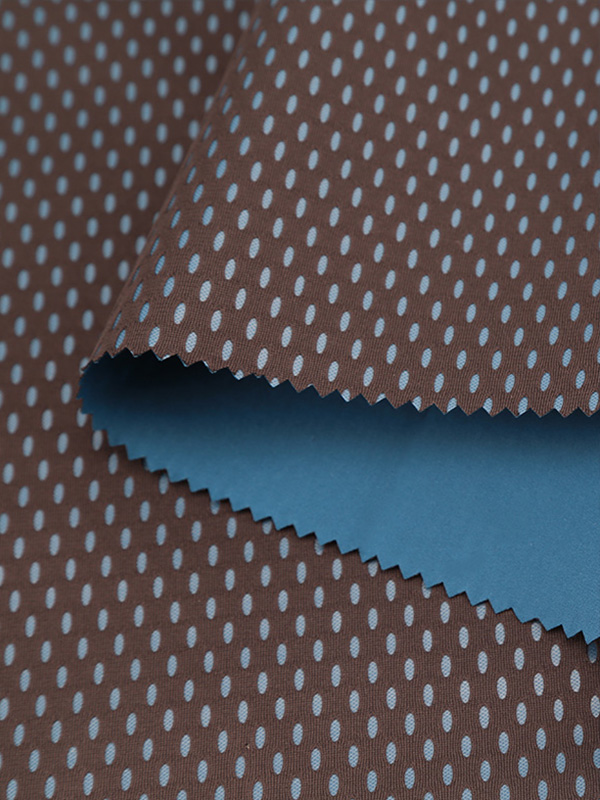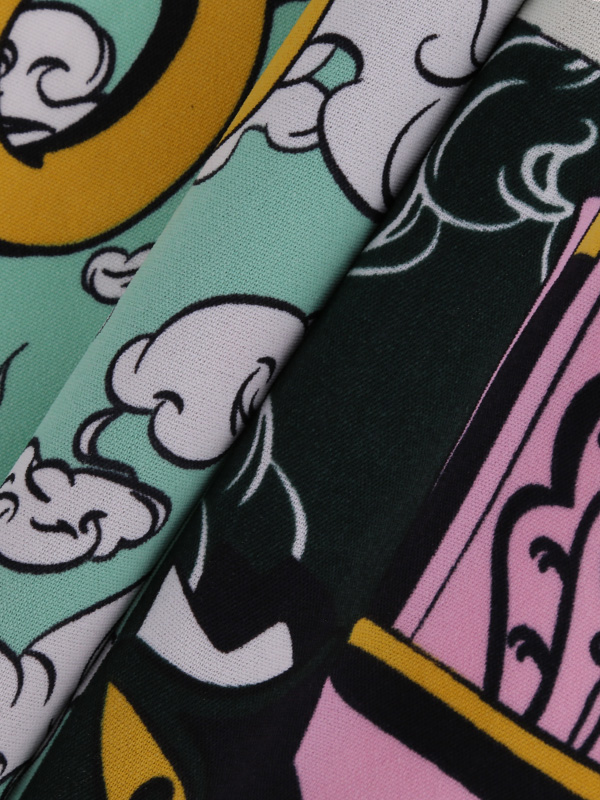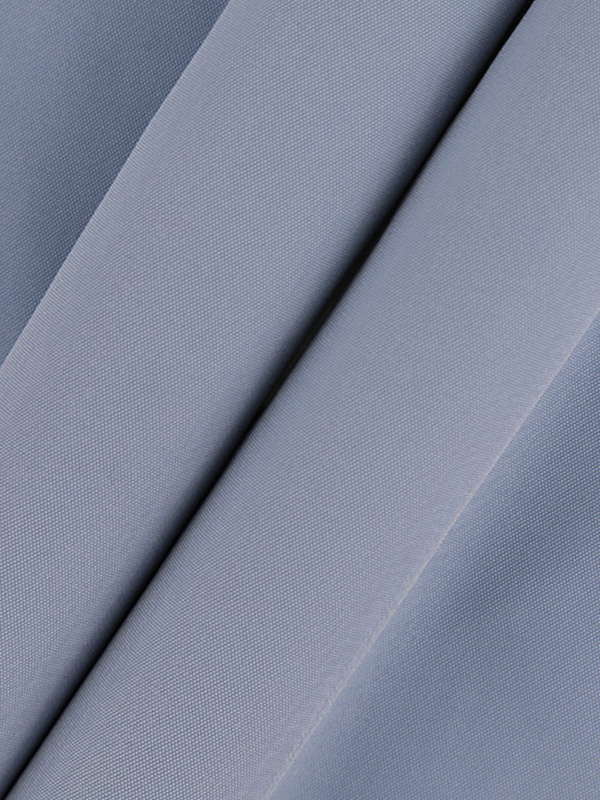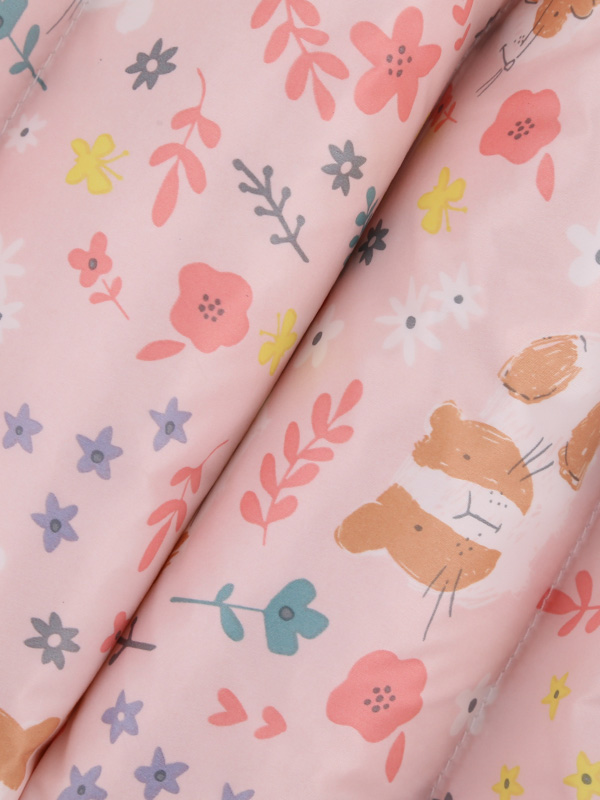Nylon fabric Manufacturers introduce fabric cutting
Fabric cutting generally adopts high-speed CM or YM series laser cutting machine, generally chooses 50mm focusing lens, the normal speed of single-layer cutting is 5 m/min, the light intensity is 40%, the power of the air pump, the quality and flatness of the honeycomb bottom plate, the light Strong size will affect the cloth damage effect. The greater the light intensity, the greater the thermal radiation, and the light and thin will produce gaps. At present, the biggest problem of cutting is the yellowing phenomenon. Put the fabric flat on the honeycomb bottom plate, turn on the exhaust fan, and remove the smoke in time to prevent the smoke generated during cutting from yellowing the fabric. Turn on the air compressor to ensure that the air is blowing. , blowing away the impurity volatiles and soot in the slit, it is more ideal to use inert gas (such as nitrogen) for blowing.
(1) The cutting of ordinary fabrics (non-woven, polyester, real good, silk, satin, twill, etc.) fabrics are light and thin materials, in order to ensure the effect of the incision, we generally use 50mm focusing lenses, with fine spots and small slits. Turn on the external equipment of the laser machine (air extraction, air blowing), and flatly adsorb the fabric on the honeycomb bottom plate, and use a high-power air pump and air compressor for air blowing. Speed: The large graph or the smooth part of the external curve of the graph can use a higher speed, taking the CM machine as an example, generally 3-10 m/min; the small graph or the part with many inner curves or corners of the graph adopts a low speed, generally 0.5- 3 m/min, light intensity: the matching principle of light intensity is high speed with large light intensity, low speed with small light intensity, generally adjust the light intensity to 30-60; The value is generally around 5-15%, in order to achieve the matching of the size of the light intensity when cutting straight line and curve acceleration and deceleration.

(2) Process requirements for special cloth cutting (white cotton cloth, clean cloth, cloth containing PC and plastic components, etc.): white cotton cloth is required to be cut without yellowing, clean cloth will not change color after cutting, and the incision will not be hard. For the fabric, we have to choose a 50mm focusing mirror, preferably an imported radio frequency laser, to ensure the quality and stability of the spot. Turn on the ventilation and air blowing (open the air compressor when cutting white cotton), and it is recommended to use nitrogen if conditions permit. Speed: 1.5-3 m/min, light intensity: 20-30%, in order to achieve the purpose of not yellowing and not hardening the incision, we need to use medium speed to match the appropriate light intensity to cut, too fast speed we must It is necessary to increase the light intensity, so that the incision will be discolored or hardened due to the high temperature scorching of the large light intensity. As far as the current equipment and technology are concerned, it is difficult to perfectly meet the requirements of this process, especially for thicker white cotton surfaces, the incisions will be discolored, and the clean cloth will also appear slightly stiff.
(3) Cutting of double-layer fabric (sticker) (the upper layer is cut through and the lower layer is not damaged or slightly damaged). This is a processing technology in the electronics industry, which has high requirements on the optical control accuracy, stability and light intensity and speed matching of the laser. At present, we generally use domestic glass tube proofing, which can basically achieve the effect, but it is recommended for large-scale processing. Imported RF lasers. Turn on the exhaust and blow air, and adsorb the cloth flat on the honeycomb, and adjust the flatness of the four corners of the honeycomb bottom plate. Speed and light intensity setting: The specific parameters depend on the material, and both can achieve a good match. Generally, the upper layer is about 1.5-6 meters, and the light intensity is about 18-35; the next layer has no light intensity and speed. The specific requirements are to drive as fast as possible on the premise of ensuring better incision quality. In addition, there must be a difference when setting the light intensity, so as to ensure that the cutting depth is consistent during acceleration and deceleration.
(4) Cutting of trademark woven label (fabric, woven label, trademark). For trademark cutting, we mainly use two working modes: automatic camera and semi-automatic manual cutting. The accuracy mainly depends on the debugging and positioning accuracy of the machine. There are some differences in each woven label, and it is impossible for each to be cut along the edge. For the cutting requirements, the method we use is similar to that of ordinary cloth cutting, but because the woven label is much larger than the cloth in terms of precision and hardness, there is also a big difference in light intensity and speed. Speed and light intensity depend on the specific workpiece.


 English
English Chinese
Chinese



